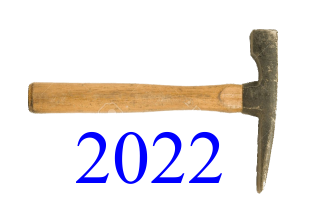Richard Chow
M. Sc. Thesis
TRACE ELEMENT PARTITIONING BETWEEN APATITE AND KIMBERLITE-LIKE MELTS – IMPLICATIONS FOR VOLATILE DEGASSING AND FORMATION OF DIFFERENT KIMBERLITE FACIES
(PDF - 12 Mb)
Kimberlites are the deepest mantle magmas to reach the surface of the Earth and the hosts of the major primary diamond deposits. The enigmatic nature of kimberlites owing to poorly constrained triggers of kimberlite magmatism, melt composition, and crystallization conditions are mostly limited by unknown composition of volatiles. The content and ratio of H2O and CO2 are important parameters of magma emplacement as they are essential for mantle melting and rapid ascent of kimberlites. Volatiles also greatly affect diamond preservation in kimberlites during the ascent to the surface. Apatite is often used as an indicator mineral of magma degassing in other magmatic systems. As such, it should be applied to kimberlite systems to study the volatile behavior during emplacement. Partitioning of trace elements between apatite and a melt is also sensitive to the carbonate component in the melt. This makes apatite a useful indicator for the evolution of melt composition and fluid during kimberlite ascent and emplacement. However, the existing estimates for the trace elements partitioning in apatite give discrepant estimates for carbonatitic melts and estimates for silicate melts use compositions that differ greatly to kimberlites. This study presents experimentally determined trace element partition coefficients (D) between apatite and synthetic analogues of kimberlite (SiO2 11-23 wt. %) and carbonatite melts (SiO2 <1 wt. % and 4.5 wt. %). Experiments were conducted in piston-cylinder apparatus at 1150°C, 1250°C, 1350°C, at 1 and 2 GPa, and at oxygen fugacity -3.97, 0.27, 4.83 log units relative to fayalite-magnetite-quartz buffer. Results show the increase of compatibility for rare earth elements (REE) with increase in SiO2 of the melt and the relationship between the concentration of other elements (Si, Ca, Na, S) in apatite and its REE content uptake using substitution mechanisms. No effect of temperature, pressure, water content, and oxygen fugacity on partition coefficient was present in these low SiO2 melts. I apply the results to apatite from two types of kimberlite pipes: (i) Class 1 composite kimberlite pipes from Orapa cluster (Botswana) with hypabyssal coherent and volcaniclastic kimberlite facies and (ii) Class 3 kimberlite pipes from Ekati Mine (Northwest Territories, Canada) filled with effusive coherent kimberlites in Leslie pipe and both volcaniclastic and coherent kimberlites in Boa pipe and discuss how changes in SiO2 content of kimberlite melt affect apatite saturation. I further apply the experimentally determined partition coefficients to model the composition of evolved kimberlite melt using published bulk rock and apatite compositions in kimberlites.
Keywords:
Pages: 155
Supervisor: Yana Fedortchuk



